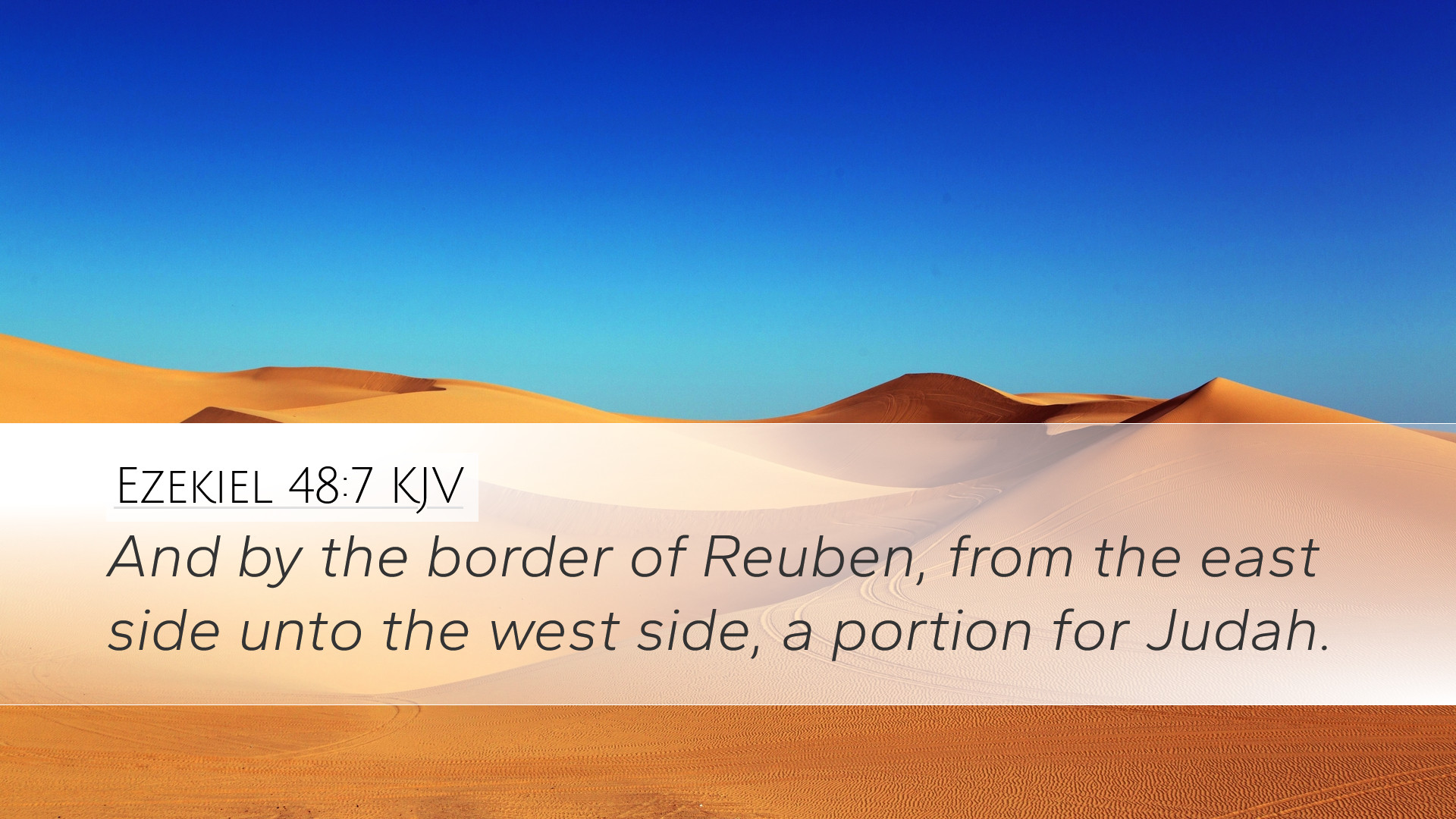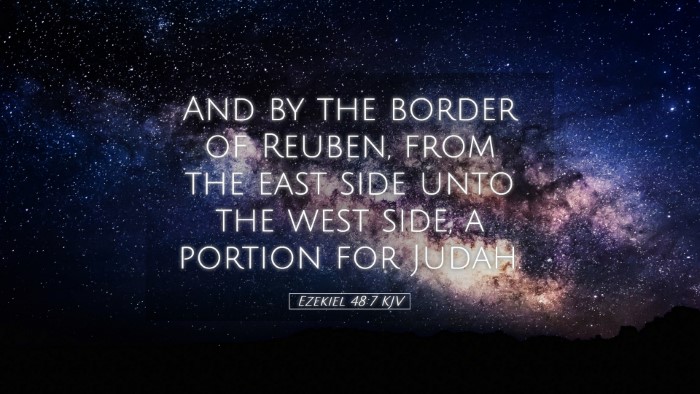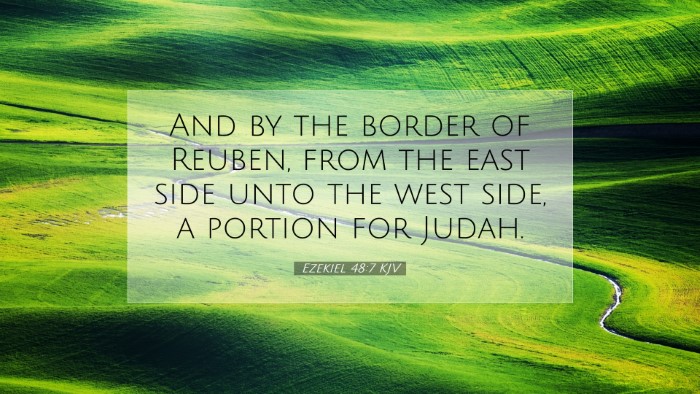Ezekiel 48:7 - Commentary and Insights
Verse: "And by the border of Gad, from the east side unto the west side, Dan a portion." - Ezekiel 48:7 (KJV)
Introduction
The book of Ezekiel, one of the major prophetic books in the Old Testament, outlines visions and prophecies given to the prophet Ezekiel during the Babylonian exile. Chapter 48 specifically discusses the division of the land among the tribes of Israel in the context of the idealized future restoration. Ezekiel 48:7 pertains particularly to the territory assigned to the tribe of Gad, framed in the larger context of the apportioning of land in the New Jerusalem.
Context and Structure
The closing chapters of Ezekiel (40-48) describe a vision of a new temple and a restored Israel, emphasizing themes of hope and restoration. In this ambitious vision, each tribe of Israel receives its inheritance, arranged notably around the temple. The division is not just geographical but carries deep theological significance, reflecting God's covenant faithfulness and the future fulfillment of His promises to Israel.
Commentary Insights
Matthew Henry's Commentary
Matthew Henry notes that the division of land represents God’s order and restoration. The mention of Gad is significant, as this tribe, among others, had a complex history, often marked by warfare and conflict. Henry suggests that this allocation acknowledges Gad's role in the military histories of Israel, “Great men shall not always be lamented, nor great families dissolved; they shall have both their land and their station in the kingdom of God.” It emphasizes that despite past failures, God’s grace allows the tribes to regain their inheritance.
Albert Barnes' Notes
Albert Barnes elaborates on the geographical context of the land distribution. He emphasizes that the divisions of land were precise and divinely ordained, symbolizing both physical and spiritual restoration. In his commentary, he reflects that: “Gad, representing the strength of Israel, signifies how God will restore strength to His people.” The east-west orientation points to the comprehensive nature of God’s promise—spanning the entire land, symbolizing His complete authority and providence over Israel.
Adam Clarke's Commentary
Adam Clarke provides detailed analysis on the historical implications of Gad’s land allocation. He suggests that while Gad is identified for its rich pastures, "The mention of this tribe emphasizes the idea of wealth and prosperity under God's provision." Clarke aligns Gad with the broader themes of blessing instituted by the Lord—reinforcing the idea that restored Israel will once again flourish as they inhabit the land promised to them. He also acknowledges the tribe's military attributes, asserting that this land divided aligns with God’s intention to establish a strong and fortified Israel.
Theological Significance
The mention of Gad’s inheritance in Ezekiel 48:7 conveys multiple theological themes:
- Divine Promises: The apportioning reaffirms God's promises to Israel, demonstrating His faithfulness and commitment to restore His people.
- Restoration: There is a significant restoration theme that echoes throughout the entire book, showing that despite exile and judgment, hope remains.
- Unity and Identity: The assignment of land highlights the importance of tribal identity and unity in God’s plan, with each tribe having its role.
- Fulfillment of Prophecy: It reflects how God’s prophecies are methodically fulfilled throughout Scripture, leading to the future hope of New Jerusalem.
Conclusion
In conclusion, Ezekiel 48:7, while a detailed record of land distribution, encapsulates profound truths about God’s redemptive plan for Israel. For pastors, students, and theologians, it serves as a reminder of God’s unwavering faithfulness despite human flaws. The verse also sets a precedent for understanding how God continuously builds and empowers His people. In studying these insights from Henry, Barnes, and Clarke, we are reminded that God's promises endure, and His blessings are generous toward those who humble themselves before Him.


